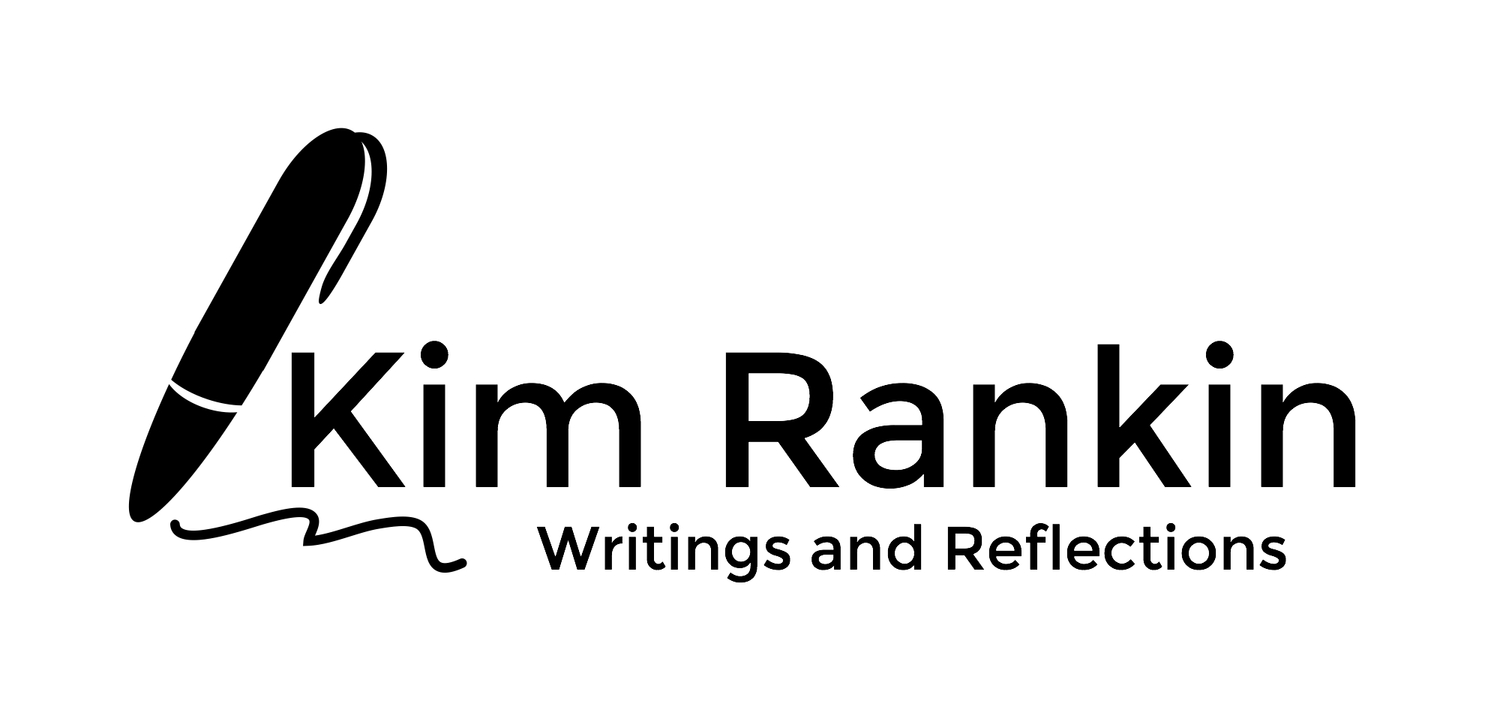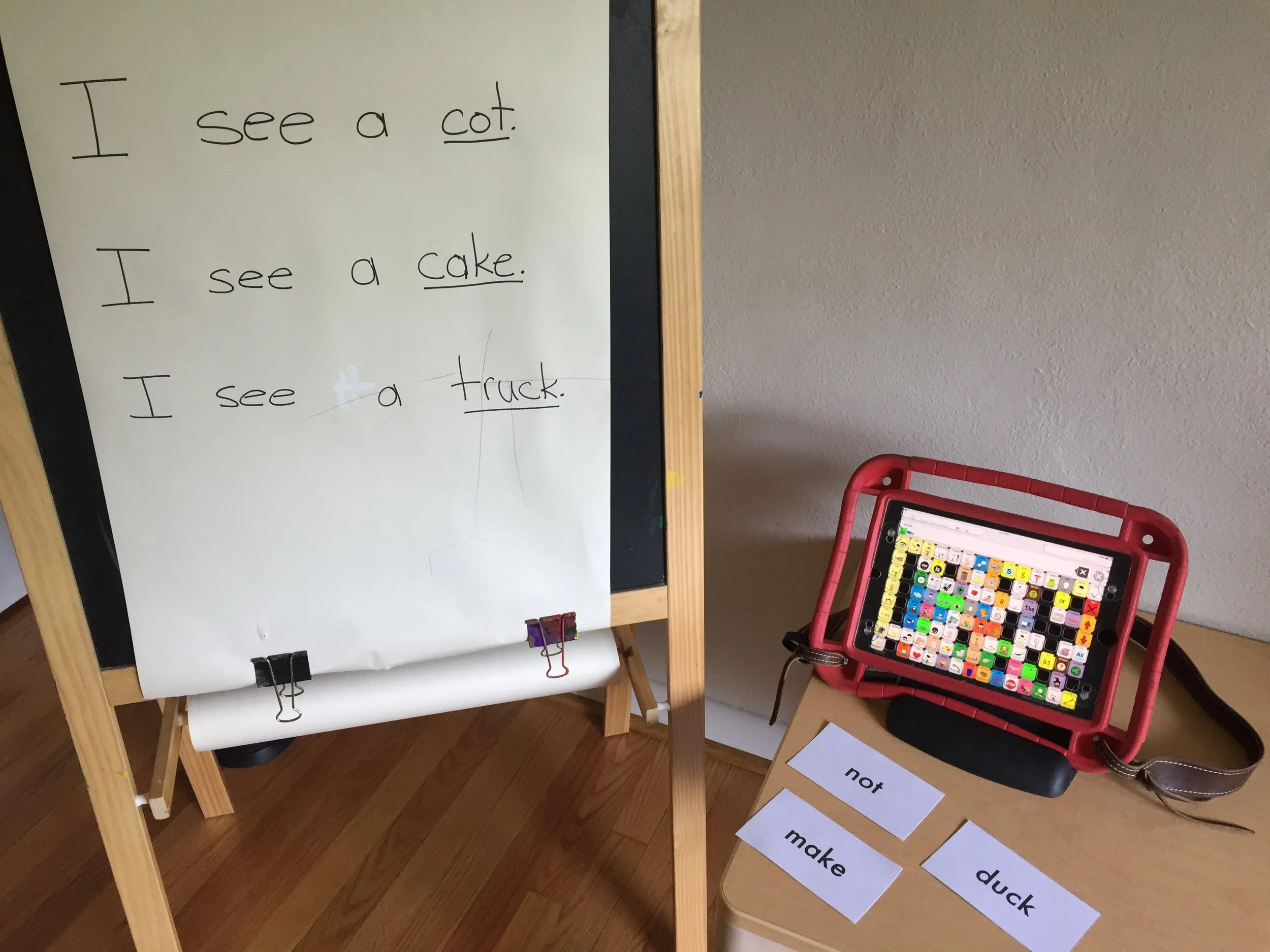First Grade: AAC Immersion and Comprehensive Literacy Instruction at Home
We started our 2019-2020 school year last week. It’s an odd schedule, but starting in July works for our family. In addition to some bigger calendar reasons to start school so early, there’s the weather and living with a trach. The heat and humidity outdoors prevented Nathaniel from being outside more than ten minutes at least one day last week. We might as well use these inside days for learning. l know one thing after a week of school. This year feels drastically different from our previous year.
Last spring ended with Nathaniel and me doing essentially the same daily learning activities that we had been working on for a couple of years. I started using the emergent literacy practices that I learned from the Tell Me - AAC in the Preschool Classroom resource in spring, 2017. I used some Memorial Press materials, either those for children with special needs or their regular curriculum for the same years. These tools served us well.
When I attended the conference, Comprehensive Literacy Instruction for Students with Significant Disabilities and Complex Communication Needs, I didn’t realize how immediately I would implement the strategies I learned there. I went to Ohio last March thinking maybe it would be information that I would be able to use in a few years. What I realized instead was that Nathaniel was prepared. He demonstrated four yes answers to the questions indicating if a child is ready for comprehensive literacy instruction. We dabbled with some of the strategies as we finished our last five weeks of the school year. I saw enough growth in that short time to convince me to implement everything I had learned at the conference when we started again for the new school year.
One of the biggest changes in my preparation is that I bought no phonics or reading curriculum for this year. Our tools are paper, pencils, crayons, markers, a keyboard, google docs, printer, and real books. The conference helped me realize that as Nathaniel’s teacher and mother, “a knowledgeable other” as Dr. Koppenhaver would label me, I can make decisions daily that offer a far more robust literacy instructional experience than if I were teaching a curriculum. This is a bold step that demands confidence I don’t always feel. Successful homeschool teaching is a sink or swim endeavor. There is no uncooperative parent, collaborative team, building principal, or school board to pin your failures on. Curriculum can be the sole scapegoat for homeschool teachers. Changing curriculum can keep the endeavor buoyant. If your student doesn’t learn using the pink flamingo version, you can ditch it, buy the white unicorn model at the next curriculum fair, and try again. This is one of things I most appreciated about the Tell Me material. It was only ten units. The authors assumed that in providing ten examples, teachers would be able to continue on their own. It was a swim lesson rather than a flotation device. It prepared not only Nathaniel for learning to read and write, but prepared me for the expectations involved in teaching comprehensive literacy instruction.
My goal is to spend three hours on literacy activities each day. This includes implementing the strategies learned at the conference: guided reading, writing, working with words, and self-directed reading. It also means viewing everything we do in a day through the lens of “How can this deepen my literacy instruction?”
I’m still young in this skill of recognizing when a strategy can be embedded in a seemingly non-associated activity, but I did recognize a few last week. One of the principles of guiding reading, setting a purpose prior to reading a text, can be used during our bible reading time as well as during formal reading instruction. Sight words can be found in the printed lyrics of a hymn or a children’s book read after lunch. Phoneme awareness and names of letters can be reviewed by writing down siblings’ names and finding all the T’s or N’s or A’s. There was a specific time for writing each day, but by leaving markers, oil pastels, and construction paper strewn on the kitchen counter, meal time preparation became a mini writing lesson. Nathaniel translated his still rudimentary drawings into stories for me with his AAC device, and I wrote them down. Activities like this blur the “this is school - this is home life line,” but they also provide reinforcement of the concepts I’m teaching.
I sense the biggest change for this school year is the underlying paradigm shift that comes as I move us into comprehensive literacy instruction. No longer is learning to use his AAC device my only goal for his communication. We use Nathaniel’s AAC device hundreds of times a day. It goes with us from room to room and when we leave the house. I model the best I can. Some days are better than others, but I keep trying. And technically, I’ve been teaching literacy all along because I’ve been reading to him since infancy and teaching letter sounds, letter names, print awareness, about books and more in recent years. But this year brings a substantial shift in my aspirations for Nathaniel. No longer is isolated letter recogniation my goal. I want him to use the alphabet. I want him to read and write. I want him to gain these skills for the pleasure they will bring, for academic purposes, but most importantly for communication. The communication app that Nathaniel uses can hold over fifteen thousand words, but even that vast sum is inherently limiting. Only the alphabet can provide unlimited means to say whatever he wants to say to whomever he wants to say whenever he wants to say it. (I’m pretty sure David Koppenhaver or Karen Erickson said that at the conference, but I can’t find in my notes who to contribute it to. Regardless, it is my sentiment regarding Nathaniel’s communication as well.)
As people we tend to see things black and white, all or nothing, highest goal or not a goal at all. When I recently wrote that Nathaniel prefers the immediacy and intimacy of sign language or when I say “no longer is learning to use his AAC device my only goal for Nathaniel’s communication,” I run the risk of being misunderstood. Some might assume I am negating the value of a high tech, robust vocabulary, speech generating device for all nonverbal children. I am not. Nathaniel’s communication device is essential to his existence as a communicator. He is completely aphonic, and so I would go so far as to say his communication device is essential to his existence as a human. Spending three hours a day on literacy instruction doesn’t cancel the need to offer an AAC immersion educational experience for Nathaniel. It does not revoke our commitment to offering aided language input. It does not mean we stop working on operational skills, keeping the device close, or making sure it is charged daily. Rather we are taking all that we have learned about alternative communication and now adding more. Having an additional goal of Nathaniel reading or writing does not necessitate dropping our goals for alternative communication. Achievement for Nathaniel has rarely been black and white - meet one goal, retain it, and proceed to the next. In honesty, it isn’t really for me either. We live real lives. Where success and lasting skills are developed more by layering daily habit upon daily habit. First grade for us means providing Nathaniel the opportunity to learn how to read and write in the AAC immersion environment we’ve already established.
I sense that “kicked it up a notch” reality. Not in an overwhelmed way, but the excitement of it. Already in the first week, Nathaniel made connections between the letters n-o-t without a symbol to the word NOT on his device in a compare and contrast writing activity. After a week of working on our first five wall words, I said “d-u-c-k spells” and paused. Nathaniel filled the gap by saying “DUCK” with his device. And when I pointed to the word “I” in a poem for him to read silently in his head, he demonstrated his understanding by pointing to himself in the same way that he signs “I eat”’ or “I go potty.” In a communication exchange last week, he offered what is likely to have been his most grammatically correct complex thought to date. I feel a mixture of “Of course this is working,” and “This is unbelievably amazing.”
In the AAC in the Cloud conference, fellow AAC mom, Kelly DeMar, said, “Many of us under estimate what we can accomplish over the course of a year, but over estimate what we can get done in a week.” I want to cling to that this year. Perhaps not every week will have the wow factor of our first week. But I can’t wait to see where a year of literacy teaching in an AAC saturated environment is going to take Nathaniel.





